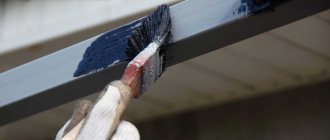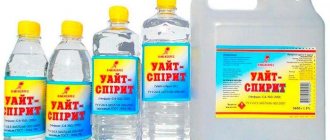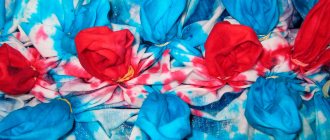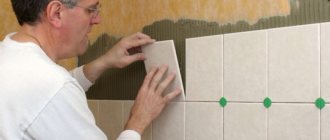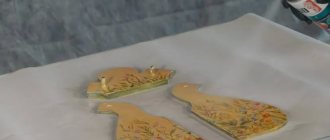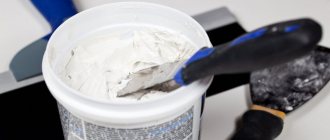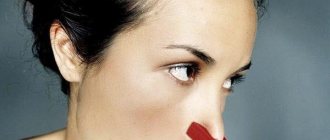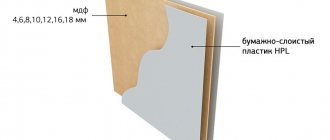Metal structures are among the most durable among systems, as well as structures made from other materials. The metal withstands shock, stretching, twisting, static and dynamic loads well. However, the material still has a weak point. Under the influence of water and other natural and man-made factors, metal structures corrode and lose strength. The most reliable means of protection against corrosion is varnish. LMs for metal have different compositions, are used in different ways, and demonstrate advantages.
Features of metal varnish
For a deeper understanding of this issue, it is necessary to study all the features of the product and its purpose.
It was previously said that this varnish is intended to protect steel surfaces from various influences (mechanical, atmospheric).
Its composition makes it possible to use the metal for a long time without additional treatments, which makes the mixture attractive.
Overall, there are several distinctive characteristics, including:
- Manufacturers of each model provide for the presence of substances in the composition that can provide protection against corrosion processes.
- High-tech production makes the solution more durable and wear-resistant.
- A paint product of this type will help slow down the aging process of the material, which significantly extends its service life.
- The ingress of all types of precipitation and humidity is excluded. This is due to the fact that the varnish is made using active chemicals.
- The use of antiseptic agents disinfects the surface and prevents the appearance of harmful bacteria.
PAINTER'S TOUCH ULTRA COVER 2X CLEAR SPRAY
PROTECTIVE CLEAR COAT – Acrylic clear coat with silica to protect painted surfaces.
MATERIAL CHARACTERISTICS
- UV-resistant, will protect the surface from fading;
- has unsurpassed covering power due to the high binder content;
- provides long-term protection and wear resistance;
- creates a smooth, durable transparent coating;
- the new, unique spray button system allows you to comfortably paint the surface at any angle, even upside down, minimizing finger fatigue;
- quick-drying;
- easy to apply;
- For interior and exterior use.
ADHESION:
Excellent adhesion to new or previously painted wood, metal, unglazed ceramics, concrete, plaster, brickwork, etc.
Restrictions:
Do not apply to surfaces heated above 93°C or to galvanized metal surfaces.
POSSIBLE APPLICATIONS:
serves both to protect surfaces painted with enamels, decorative paints, etc., and as an independent coating.
VISUAL EFFECT:
dense smooth transparent coating (matte or glossy).
COMPOUND:
acrylic, amorphous silicon oxide + org. solvents
PACKAGE:
spray, net weight - 340 g
CONSUMPTION:
2 sq.m
SURFACE PREPARATION
Remove loose paint and rust with a stiff brush or 80-150 sandpaper.
Remove all sanding dust with a vacuum cleaner, then wipe with a damp, lint-free cloth and dry the surface thoroughly.
APPLICATION
Apply protective varnish outdoors or in well-ventilated areas. Apply at air and surface temperatures between 10°C and 32°C and relative humidity below 65% to ensure proper drying. Do not spray in strong winds or heavy dust. Cover all surrounding objects to protect from colorful mist.
Shake the can vigorously for 1 minute after you hear the mixing ball rolling around inside. If you cannot hear the sound of the mixing ball inside, do not start working with the spray! Shake the can frequently during application.
DRYING TIME
At 21°C and 50% relative humidity
- until sticky – 20 minutes;
- light use – 1 hour;
- re-application - within 30 minutes or after 48 hours;
- Complete drying - 24 hours.
NOTE: On plastic, maximum paint adhesion and durability is achieved after 5-7 days. Cleaning: Precautions: Do not insert a pin or other objects into the channel. Pressurized cylinder
Protect from direct sunlight and heat above 50°C. Do not pierce or burn even after use. Do not spray near open flames or hot objects. Do not smoke while working. Cylinders may only be thrown into designated areas.
FIRE HAZARD! Keep away from children!
BEST BEFORE DATE:
Types of varnish for metal
The enormous popularity of both the metal itself and the special varnish led to the emergence of various varieties and types of mixtures. Now, in specialized stores you can find a large number of models and brands.
The following varnish compositions exist:
- Bituminous. From the name it is clear that it is produced with the addition of artificial or natural bitumen. This formula creates excellent protective layers that can withstand many harmful factors. Also, experts note its ability to resist various types of mechanical stress. Overall, this is a good solution for household use, with good reviews and characteristics.
- Polyurethane. It differs in that it is used both outside and inside the building. Its use is possible even in hard-to-reach internal parts of metal structures. This is due to high adhesion rates and reliable resistance to wear and high temperatures.
- Acrylic. The addition of acrylic adds water resistance to the product, therefore, it is used in conditions where large amounts of water or moisture may enter. Also, this technology is absolutely safe in terms of fires.
- Alkyd. This variety is suitable for decorative decoration, because it not only creates a durable film, but also gives it shine. It is worth noting that it is also universal, because it can be applied to a variety of coatings and surfaces.
- Heat resistant. The name of this model makes it clear that it contains substances that further improve resistance to temperature changes.
Varieties
Spray varnish can serve different purposes depending on its type
Spray varnish can serve different purposes depending on its type:
- Tinting varnish compositions are suitable for processing automobile bodies, individual components and parts. For example, such a mixture is suitable for tinting headlights or other parts made of glass or plastic. As a rule, tinting varnish helps protect parts from weather factors, mechanical influences and aggressive chemicals. In addition, it improves the aesthetic qualities of the car, creating the effect of novelty and shine. Also, the tinting spray perfectly protects wooden surfaces after restoration.
- Reflective compounds in cylinders contain special particles that, in addition to a glossy shine, allow the surface to reflect light in the dark. That is why such compositions are usually used to coat parts on cars, road signs and other accessories of bicycles, helmets, etc. Such varnishes are suitable for surfaces made of steel, glass, plastic, and wood. In turn, these mixtures are divided into several subtypes depending on the special effects they can create:
- sparkle of diamonds. Such compositions give the surface incredible shine, volume and depth;
- chameleon. This coating can change its hue at different viewing angles and lighting;
- starry sky effect. This composition contains multi-colored microparticles that create a diffused glow on the surface.
- Polyurethane varnish compositions. These mixtures, like Plastik acrylic varnishes from Cramolin, are designed to protect surfaces from mechanical stress, moisture, scratches, mold, and high temperatures. They are used for products made of plastic, wood, and metal. To increase the protective effect, it is recommended to apply the composition in several layers (3-4). In this case, each previous layer must dry completely, so take into account how long the varnish you choose dries. On wooden surfaces, such a varnish only emphasizes the texture of the wood and gives the product shine.
How to choose metal varnish
Today, in the market you have the opportunity to find anything. But it is not a fact that the purchase will be successful, because an unprepared person can very easily make a mistake.
Making mistakes leads to unpleasant consequences, and therefore you need to know by what parameters to select a varnish.
This list includes:
- List of technical characteristics, which is different for each model. Here, pay attention to the areas where work will be carried out and the characteristics of temperature and atmospheric conditions.
- Ability to work indoors or outdoors.
- Color palettes. This is very important for those people who want to create a design or style.
- Levels of gloss, which also constitute the decorative properties of the liquid.
Useful tips
The most important step in working with varnish is the preliminary preparation of the surface. Usually they start with grinding using a special material. It is called a grinder and is equipped with rectangular blades with rolled edges.
The surface should become absolutely flat after cleaning. But even after this, additional sanding is often required, involving the use of sandpaper. First use the coarse-grained version, and then the fine-grained version. Sandpaper is needed so that marks from cutting tools can be completely removed.
If you sand lengthwise, you will be more likely to avoid serious scratches on the surface. This applies not only to wood, but also to metal. The surface should become glossy-matte after polishing when viewed from the sunny side.
For metal, the aerosol varnishing method is most suitable. The bottle of varnish must first be heated using a special water bath. Then the graininess is reduced, and the work itself is done more accurately. Subsequent layers are applied only after the previous ones have dried well.
Benefits of using metal varnish (2 videos)
Varnish of different brands (25 photos)
Benefits of using varnish
When dealing with this liquid, you cannot ignore the beneficial qualities that it possesses.
These include:
- Low cost.
- Availability in any market.
- High resistance to humidity, sudden temperatures and water.
- Excellent resistance against corrosion.
- Creating durable layers.
- Properties of elasticity and resilience.
- High level adhesion.
- Good resistance to aggressive chemicals and liquids.
- Ability to increase service life.
- Fire safety.
- Possibility of using some models for application to car bodies.
- Good adhesion to different coatings.
- Possibility of selection in different colors, with decorative features.
Scope of application
Processing is carried out for copper, cast iron, aluminum alloys, steel structures with a low degree of alloying. It is worth considering that not all compositions are suitable for interior or exterior work, although there are universal ones. It is better to check this information with the seller, and also read the recommendations on the label. For structures with a complex surface (curly forging, small elements), a liquid form of release is suitable, and the aerosol version will do an excellent job of painting medium-sized cast surfaces without leaving streaks or smudges. Acrylic varnish has the least toxicity and can be used in the treatment of water containers. Special paints and varnishes that are resistant to chemicals are used to coat metal products in contact with aggressive chemical environments. LMs are mainly used to protect products from corrosion, but colored and decorative varnishes expand the possibilities.
For forging it is better to choose liquid varnishes
Which manufacturer to choose
Nowadays, specialty stores can offer thousands of options; to choose the best one, check out the list of brands that are considered trusted and reliable.
Here you can note:
- NEOMAST – Russia
- HUSKY – Czech Republic.
- TEX – Russia.
- LEVIS - America.
- TIKKURILA – Finland.
- HAMMERITE – America.
- CERESIT - Germany.
- KUPFER - Germany.
- SIVER - Russia.
- BELCOLOR – Belarus.
- SASHKOL – Ukraine.
Colors
Most varnishes are transparent, which allows them to be used as final surface decoration. These include polyurethane. The following forms of release are distinguished:
- matte (emphasizes the texture and color of the base, has no shine, visually allows you to hide minor defects in the material);
- glossy (forms a shiny film on the surface, looks solemn, but at the same time emphasizes existing surface defects).
If you want to change the shade of the base, you can use colored varnishes. This composition can be purchased ready-made or you can achieve the desired shade by mixing clear varnish and color. An important point is that the last two compositions must be compatible. For example, for acrylic varnish you should choose an acrylic-based color.
In addition, there are products that do not change the color of the product, but make it half a tone or tone darker. This is the bitumen composition. When applied to cast iron and most metals it produces a deep black color.
Photo of the best metal varnish
The sequence of applying nitro varnish to a wooden surface
First you need to treat the surface with a wood stain, which is based on alcohol, water or an organic solvent. This is necessary to preserve the natural grain of the wood, as well as to emphasize its texture.
This is followed by the first application of nitro varnish. The drying interval between applications of the material can range from 45 minutes to 2 hours. You can increase the drying speed using an industrial hair dryer.
The second layer of nitro varnish takes about 6-8 hours to dry. Next you need to sand the coating.
It is necessary to take into account that each subsequent layer of this varnish should be applied perpendicular to the previously applied layer.
Table. Requirements and standards for varnishes in accordance with GOST 4976-83.
| Indicator name | Standard for brand varnish | Test method | ||||
| NTs-218 | NTs-222 | NTs-223 | NTs-243 | |||
| 1. Appearance of varnish | Transparent, homogeneous solution | Opaque solution from light yellow to yellow | According to clause 4.8 | |||
| 2. Appearance of the film | Glossy, smooth, transparent, uniform coating without bubbles or mechanical inclusions | Smooth, uniformly matte, uniform coating without bubbles or mechanical inclusions | According to clause 4.4 | |||
| 3. Varnish color according to the iodometric scale, mg/100 cm3, no darker | 20 | 40 | 40 | According to GOST 19266 | ||
| 4. Mass fraction of non-volatile substances, % | 30 — 34 | 22 — 26 | 33 — 36 | 26 — 32 | According to GOST 17537 and clause 4.5 of this standard | |
| 5. Conditional viscosity at (20.0 ± 0.5) °C using a VZ-246 type viscometer with a nozzle diameter of 4 mm (or VZ-4) | 50 — 85 | 30-45 | No more than 125 | 35 — 80 | According to GOST 8420 | |
| 6. Boiling temperature of varnish, °C, not lower | — | — | 75 | — | According to clause >4.6 | |
| 7. Drying time of varnish at (20 ± 2) °C to degree 3, hours, no more | 0,75 | 1 | 1 | 1 | According to GOST 19007 and clause 4.7 of this standard | |
| 8. Film elasticity when bending, mm, no more | 15 | 35 | 5 | 10 | According to GOST 6806 and clause 4.8 of this standard | |
| 9. Film hardness, conventional units, not less, according to a pendulum device: | According to GOST 5233 | |||||
| type M-3 | 0,5 | 0,6 | 0,55 | 0,4 (0,30) | ||
| type TML (pendulum A) | 0,2 | 0,3 | 0,25 | 0,2 (0,15) | ||
| 10. The ability of the varnish film to be sanded and polished | >The film must withstand the test | >Do not define | >The film must withstand the test | >Do not define | According to clause 4.9 | |
| 11. Film gloss, % | According to GOST 896 and clause 4.10 of this standard | |||||
| no less | 60 | 50 | 50 | — | ||
| no more | — | — | — | 20 | ||
| 12. Conditional light fastness of the film, h, not less | 2 | 2 | 2 | 1 | According to GOST 21903, method 2, and clause 4.1 of this standard | |
| 13. Film resistance to static action of water at (20 ± 2) °C, h, not less | 12 | 6 | 6 | 6 | According to GOST 9.403 and clause 4.12 of this standard | |
| 14. Heat resistance of the film at (60 ± 2) °C, min, not less | 30 | 30 | 30 | 30 | According to clause 4.13 | |
Production
The production technology is complex and is carried out in stages:
- dissolution of resins and colloxylin with organic substances;
- adding plasticizers, modified compounds;
- measuring the results obtained;
- cleaning the composition;
- filtration;
- spilling into containers (for example, nitro varnish in cans).
Nitrolacquer is tinted by adding pigments. Without them, the finished product remains transparent (colorless). The amount of added components is entered relative to the volume of colloxylin. The main component is classified as flammable and explosive, so it is stored in a sealed container under proper conditions. By adding colloxylin you can increase the thickness of the product. If it is too viscous and thick, it is diluted with solvents. To ensure that paints and varnishes have a uniform consistency, the composition is cleaned in centrifuges.
Colloxylins can be of high-viscosity or low-viscosity grades (BB or PSV, respectively), and are produced from cotton and wood cellulose. The nitrocellulose base creates a protective film after applying the product to the surface itself. Solvents can be high-boiling (dioxanes, ketones, for example, methyl isobutyl ketone or cyclohexanone), low-boiling (formal glycol, ethyl acetate, propyl acetate, methyl ethyl ketone, acetone). The addition of xylene and toluene allows you to adjust the consistency of the composition.
Plasticizers are either gelling or non-gelling. The second category includes casterol, chlorinated paraffin, castor oil, sovol. For gelatinizing types, additives from sebacates, phosphates, and phthalates are suitable.
To get colored nitro varnish, do:
- dissolving the coloring pigment in an organic solvent;
- combining the finished coloring solution with the finished composition of nitrocellulose varnish.
Preparation of colloxylin (loosening, weighing) is carried out in a separate room due to the increased fire hazard. The component is stored in sealed aluminum barrels.
The production of nitro varnishes with a thick consistency requires the use of mixers with horizontal loading and the alternate addition of components: alcohol, thinner, resins, resin solutions, plasticizers, colloxylin, active solvents. The finished nitro varnish is packaged in barrels, jars or tanks.
Nitrocellulose mixture can also be prepared at home. Watch the video.
Compound
In addition to wood (or cotton) cellulose, an organic thinner, alkyd and amino-formaldehyde resins, Winsol and rosin are added to the composition. Propyl acetate, acetic acid esters, toluene, ethyl acetate, and xylene can be used as solvents. Possible nitroparaffins (plasticizers) include chlorinated paraffin, phosphates, and casterol.
How long does it take to dry?
Immediately after application, alkyd varnish looks like glue. After about 10 hours, some varnishes that have special hardeners in their composition will already harden. Typically it takes 24 hours for one coat to dry.
It is worth noting that the thickness of the varnish film after drying may become smaller, in this case it all depends on how much of the solvent has evaporated. Its content in alkyd mixtures may vary, and based on this indicator, the toxicity level of the composition increases or decreases.
Advantages
By studying the technical characteristics of varnish NTs 222 and similar compositions from different manufacturers, it is easy to evaluate their positive properties:
- Nitrovarnishes provide high-quality protection and a noble appearance of the treated surface;
- When applying paintwork materials, it is often recommended to use a primer, but nitro varnish combines the properties of both substances;
- Experts note the ease of use if all stages of pre-treatment of wood are followed;
- The varnish deeply impregnates the wood, the surface can be sanded;
- Long period of operation of products opened with varnish;
- The smooth surface is resistant to fluctuations in temperature and humidity, the product is additionally protected from mold and mildew;
- Good quality tinted, matte and varnished surfaces at an affordable price.
The wide variety of nitrocellulose-based offerings ensures the choice of a specialized composition that meets all operational requirements. For example, you can select adapted compositions for parquet, laminate, terrace or deck boards.
Nitrovarnishes provide high-quality protection and a noble appearance of the treated surface.
Alkyd-urethane varnish mixtures
Recently, the use of alkyd-urethane compounds has become quite popular among consumers.
The main components here are alkyd and polyurethane additives.
The modification occurs due to the addition of toluene diisocyanate to the varnishes, and this in turn increases the molecular weight of the varnish composition. This significantly affects the surface drying process. First of all, the solvent “leaves” from the surface, due to which oxygen begins to act on it and the alkyd product hardens.
What is advantageous is that this type of varnish dries much faster.
It has a higher level of moisture resistance and mechanical loads.
Such surfaces can withstand sudden changes in temperature well, and this in turn increases their service life several times and retains their original appearance longer.
No one is stopped by the price (quite a lot) at which such compounds are sold. The end result is definitely worth it.
The main component of the product is an organic solvent (slightly less than half of the total volume). This is not good because it is toxic and not fireproof.
The same cannot be said about alkyd varnishes made on a water basis; here they benefit significantly.
Since alkyd-urethane mixtures pose a threat to human health, work with them can only be carried out by adhering to precautionary measures and protecting yourself with the necessary protective elements.
It is also necessary that the varnish dries very well during painting, otherwise defects will appear on the coating, which will require the use of a sanding machine to eliminate.
